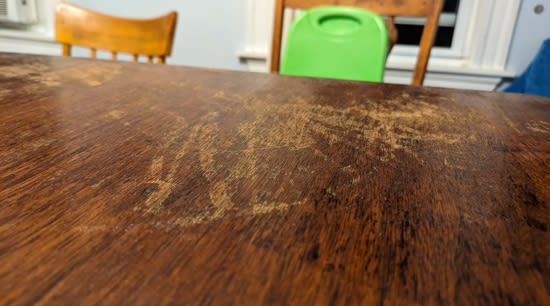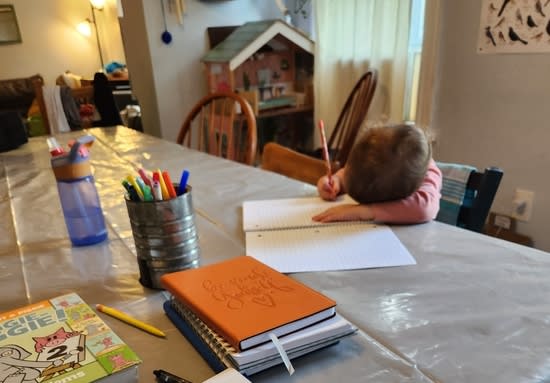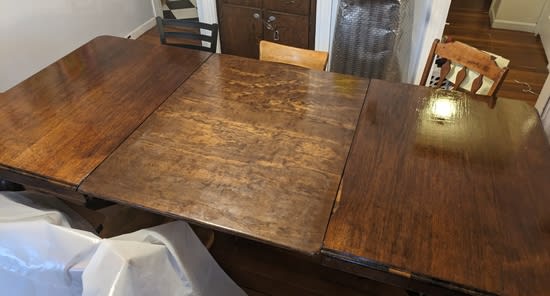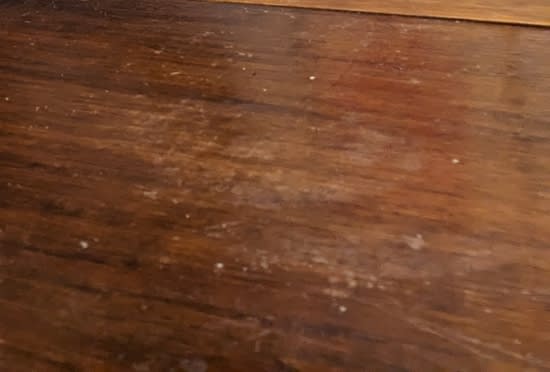Disappointing Table Refinishing
post by jefftk (jkaufman) · 2023-12-04T02:50:07.914Z · LW · GW · 3 commentsShaving cream on a table: good kids activity on a wet day, right?
Unfortunately it turns out our table's finish is alcohol-soluble, and spending a couple hours covered with a high-alcohol foam was not good for it:
The center leaf I made, and is polyurethane, but we decided the original portions were probably shellac.Initially, we put plastic sheeting on it (always have extra plastic sheeting on hand!) to protect it from further damage:
I looked up how to shellac tables, bought flakes and alcohol, and mixed up some 1.5lb. I sanded the damaged finish to get it smooth, but wasn't trying to fully remove it. I did ~5 layers of shellac, letting it dry overnight between them and covering with plastic during the day so the table would still be usable.
Unfortunately, it didn't really work: each evening when I went to put on another layer a few spots of finish would come up with the plastic. And even over a month later it's not completely cured: when we put a hot dinner dish on a cork trivet, at the end of the meal there will be little bits of cork stuck to the table. It's also way less resilient to scraping and other damage than the original finish was.
At this point we're just ignoring it, but someday I'd like to fix it properly. Possibly I'll strip the whole surface and put on polyurethane? Advice?
Comment via: facebook, mastodon
3 comments
Comments sorted by top scores.
comment by Nathan Helm-Burger (nathan-helm-burger) · 2023-12-04T18:50:28.145Z · LW(p) · GW(p)
Shellac is inherently pretty weak and vulnerable, and reversible. Even once you got it as cured as it can get, it can still re-soften. I think you're likely never to be satisfied with the finish you get with it for a dining table. On the plus side, it should be easy to strip off if you decide to refinish with something more durable!
Replies from: jkaufman↑ comment by jefftk (jkaufman) · 2023-12-04T22:22:49.678Z · LW(p) · GW(p)
Which does make me wonder whether we were correct that shellac is what was on there before! Since that did seem sturdy.
comment by Zac Hatfield-Dodds (zac-hatfield-dodds) · 2023-12-04T06:09:18.451Z · LW(p) · GW(p)
I really, really like the finish from osmo oil (polyx for tables or topoil for eg cutting board level food safety). Requires sanding back the first time, but subsequent coats or touchups are apply-and-buff only; you might want a buffer but I've done it by hand too.
Aesthetically, it's very close to a raw timber finish, but very water resistant (and alcohol resistant!), durable, and maintains the tactile experience of raw wood pretty well too - not sticky or slick or coated. Slightly more work than polyurethane but IMO worth it.




